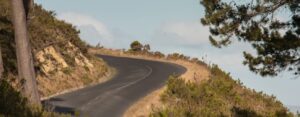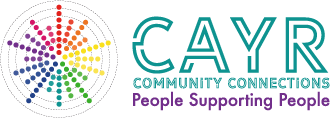 It’s been a while since I have written something. I wasn’t sure what to write, or what inspired me lately enough to write about. In trying to get to the heart of what I wanted to write, I thought first about HIV and aging. As a springboard if you will. And it is to some degree where this article springs from. I am HIV-positive and I am aging, and I do have something to say about it. In fact, I am deeply inspired by it in the current role I am in as a Peer Research Associate. But that’s not really where my thinking and this article ended up landing. Instead, I found myself reflecting on my journey from a front line worker, to advocate, to administrator, to activist, and finally to research, and how much I love science and research as an artist, and as a woman living with HIV.
It’s been a while since I have written something. I wasn’t sure what to write, or what inspired me lately enough to write about. In trying to get to the heart of what I wanted to write, I thought first about HIV and aging. As a springboard if you will. And it is to some degree where this article springs from. I am HIV-positive and I am aging, and I do have something to say about it. In fact, I am deeply inspired by it in the current role I am in as a Peer Research Associate. But that’s not really where my thinking and this article ended up landing. Instead, I found myself reflecting on my journey from a front line worker, to advocate, to administrator, to activist, and finally to research, and how much I love science and research as an artist, and as a woman living with HIV.
When I first found out I was HIV-positive I went through a rough couple years of shame, grief for a life lost, self loathing for being positive, and I truly saw no future or hope. I felt I had failed so many, and wasn’t worthy of any kind of life. I was broken, emotionally, physically, spiritually. It took time, work and forgiveness to find my way to a place where I could see a future. Never in my pretty wild imagination did I see it beginning in front line HIV peer support and navigation, health and wellness coordination, and eventually to where I find myself today. A Peer Research Associate on a Canadian HIV study on women, as a contributor and valued team member.
I LOVED front line work! I started volunteering and then working when I was 2 years positive. In hindsight, I wasn’t really ready for front line work emotionally. It took learning the hard way to understand boundaries and the emotional toll frontline work includes – including how not to take your work home with you – before I found confidence in front line work. There were many learning curves I wasn’t prepared for nor educated enough to know as relatively newly diagnosed. However, it certainly wasn’t for lack of training, or available experience to be had. I had immense training in a city world renowned for its HIV research and researchers. I was fortunate to have learned from some of the very best and was hired as the first full time HIV-positive woman in a clinical setting as a peer navigator in Vancouver, B.C. Canada! I felt engaged in life again, and I was so grateful to feel like I had something to contribute to. I had found a future amongst all the trauma and drama I had bestowed on myself within the HIV community itself.
“It took time, work and forgiveness to find my way to a place where I could see a future.”
I loved working with newly diagnosed and breaking down barriers for women in the HIV community, by sitting at the table and having a voice, speaking up for women in my community and province that were not seated at the table and whose voices were not being heard. I knew that my inherent white privilege made it 100 times easier for me, in my health care, opportunities and options. I also knew that I was working amongst an even more privileged predominately white MSM community that had been leading the fight against HIV in my community with passion and vision for over 30 years. That was a sign of the times in my community, and I have unending respect and solidarity for ALL those who have walked before me and buried their friends, family, and lovers when there truly was no hope.
Over time, I saw policies change and groups that had not been seated at the tables before slowly begin to be represented. Indigenous women, black women, trans women, women that only a few years earlier had not been there. These women became my mentors, my colleagues and some, dear friends, our common denominator – a virus.
I found myself asking bigger questions, and stumbling while finding my way. I found myself sitting at more tables, with more meetings and less front line work that I had so loved when I first started in 2011, considerably less one on one peer to peer work, and more volunteer coordination, budgets, and administrative work. I did some deep soul searching, volunteered internationally in a women’s HIV centre in Kenya in 2018. I volunteered with organizations that needed volunteers, whatever the job was, and stopped earning a living from HIV. I kept listening, and learning, the more I learned the more questions I had, and in turn over time, the more questions I asked.
“Over time, I saw policies change and groups that had not been seated at the tables before slowly begin to be represented.”
The first big question I remember thinking was why was there so little HIV research in general on women? Which evolved to, why were all the drug trials for MSM? And then, to why are all the results assumed to apply to women? Why when women were now over 50% of the global population living with HIV was there still a glaring disparity in the amount of women’s research being done? Why were the scientists not asking these questions? Why weren’t women demanding more research?
There were many answers that I found as I began my research, and I realized within women’s HIV research was a world I hadn’t been a part of yet. I had been a part of the research as a participant, but not as a contributor. I began to feel as inspired as I had when I began working for ASO’s and community organizations in front line services, only now with the experience of community ingrained in my voice.
The women and men that pioneered HIV women’s research across the globe are truly inspired folks, with passion and tenacity that has changed the face of HIV research. They are groundbreaking scientists that are asking relevant questions, with inclusion, and more equitable participation. More and more policy is being reviewed and implemented so that research is representative of what’s happening for women living with HIV by inquisitive scientific minds leading inquiry in complete partnership with women living with HIV. Research is being done that matters to HIV women and the researchers who are inspired directly or indirectly by them are now being recognized globally by the funding gods finally beginning to acknowledge their work.
“The first big question I remember thinking was why was there so little HIV research in general on women?”
What’s more, the knowledge translation and dissemination of information is becoming much more creative, inventive, engaging and accessible. This website www.lifeandlovewithhiv.ca, for example, was born out of an amazing PhD student researcher’s vision for an inclusive forum for women to talk openly about sex, life and love, who then gathered a team of outstanding researchers and positive women to bring this vision to fruition, and despite funding cuts, continues to exist, sharing women’s writing living with HIV in a positive life affirming and globally conscious mandate, with tenacity, diversity, and vision.
There are HIV positive women storytellers, dancers, artists, filmmakers, creators and writers from cultures across the globe, who are also now being included at the research tables, as collaborators and equitable partners in asking the questions from conception to completion. More and more science and HIV research is recognizing the opportunities art has to transform knowledge translation and dissemination within the HIV community. This is exciting, this is promising, and in the midst of another pandemic, it gives me hope and rejuvenated spirit to believe in not only the inherent brilliance of science and the answers that can be found, but also as a women living with HIV how incredibly grateful I am for the groundbreaking researchers and HIV positive women that continue the push forward to reflect the reality we live in. To ask the relevant questions, to study the impacts on health, community, society, and how we can collectively work together to answer the unanswered questions that brings us closer to the answers we all want I suspect, a cure and the eradication of HIV.
Recently I had the delight to speak to a woman HIV researcher who took the time to share her observations and expertise and how she was inspired to enter HIV women’s research. She explained how one day she was doing her job as a Dr. when she stumbled upon a question when someone died she had no answer for, and, when it happened again to another woman, she knew she had bigger questions to ask. That’s why she decided to delve further into women’s HIV research. She truly made me catch my breath when I heard her say that. It was the purest motivation I had ever heard for wanting to do research – to find out why someone dies and someone doesn’t, to understand the virus, in search of not just living with it, or, as we are all supposed to be, “thriving” with it, but preventing it from happening to others and ultimately curing it.
“This is exciting, this is promising, and in the midst of another pandemic, it gives me hope…”
During this third wave of COVID 19 in Canada, I am struck by this sense of hope and inspiration that science provides me in living with HIV, and learning about another pandemic virus without a cure. Perhaps, one of the lessons learned from the HIV pandemic that applies to COVID for me, is never lose hope or faith in science. We can do so much more if we work together. Collectively we must support our front line workers unconditionally by listening to public health orders, by doing what we know works, you know the drill by now, let research and science continue to evolve and do its job. This isn’t rocket science – this is pandemic medical science, constantly evolving as we learn more and ask bigger questions, the more we learn, the more we know, and the more questions there are to be asked. I for one believe in science when it comes to a pandemic, without it, I dare say, people living with HIV would not be where we are today – living with HIV 40 years on.
I gratefully acknowledge that the land I work, live and write on is the unceded territory of the Coast Salish peoples, including the territories of the Səl̓ílwətaʔ/Selilwitulh (Tsleil-Waututh), the xʷməθkwəy̓əm (Musqueam) and Skwxwú7mesh (Squamish) Nations.
By Written By By Wynne ST April 14, 2021
This blog was originally posted on Life and Love with HIV on April 14 2021





